Dell U3014 LCD Review
by Chris Heinonen on April 15, 2013 2:00 PM ESTThe last Dell monitor that I reviewed, the U2713HM, really impressed me by having a very accurate sRGB mode out of the box. It was the best performing one that we had seen to that point, but since then we’ve switched the way that we evaluate monitors and now use dE2000 data that can’t be directly compared with previously tested displays.
Pre-Calibration with the Dell, the sRGB mode was the most accurate, though I did look at the grayscale on every other mode to be sure before I selected it. The Multimedia preset was the closest other than the sRGB, but color accuracy on it wasn’t nearly as good as it was on the sRGB mode. Looking at the grayscale data, we see that there is a bit of a green push there, and our average CCT winds up at 6389 and not quite the ideal 6503K.
The Gamma has a small dip at 5%, indicating that the gamma is an sRGB target and not our 2.2 target, but there is also a large drop at 95% that I see many times in displays. This indicates that the very peak whites are spaced too tightly together, possibly by an incorrect contrast setting or something else in the display electronics. You’ll see highlights be slightly washed out as a result.

The grayscale dE hovers right around 3-5 for most of the range and has an average dE2000 of 4.3. I did measure a contrast ratio of 905:1 in this mode, with whites just over 200 cd/m2 and black at 0.2225 cd/m2. The grayscale is good here but not excellent.
Colors are much better, with the major errors being in white, but overall the luminance levels are very good. That's the most important aspect and the color errors are low. If we could remove white from the average it would be far below the 2.14 we got, but color performance is very good. They also match up pretty close to the targets, with just slight under-saturation in some colors.
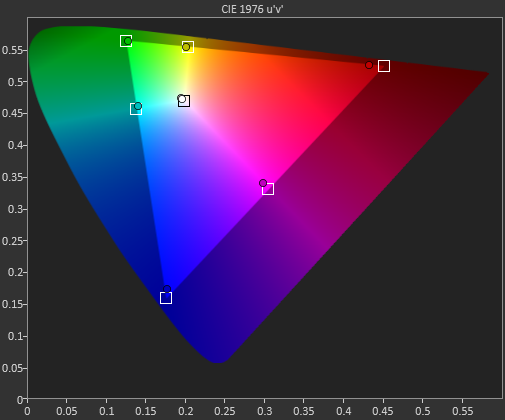
The Gretag Macbeth numbers are very good for a non-calibrated display, and we once again see that the grayscale is the majority of the issue here, with colors being much better. That’s a bit surprising to me as often it’s the other way around, but that is just what we see this time, along with some more slight under-saturation. I included the luminance chart here for the Gretag Macbeth data just to show that the U3014 is dead-on accurate with the luminance levels, which is what you want to see.
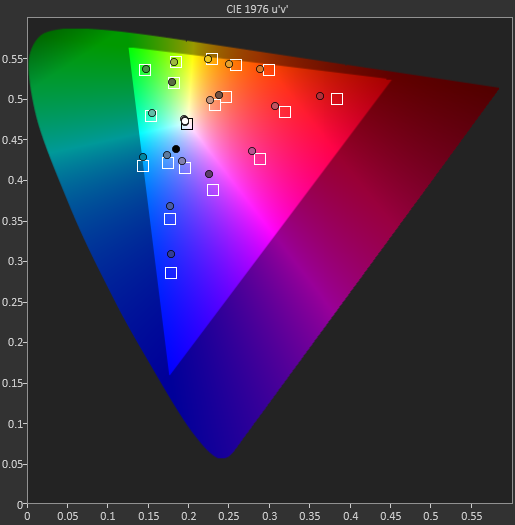
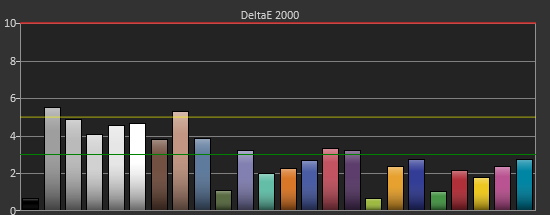

Finally when we check out the saturations, we see that some colors are very good, like Yellow and Green, but Red has a noticeable lack of saturation across the gamut, and the issues get larger as we get closer to 0%. These aren’t awful numbers, but they're not as good as we could see.
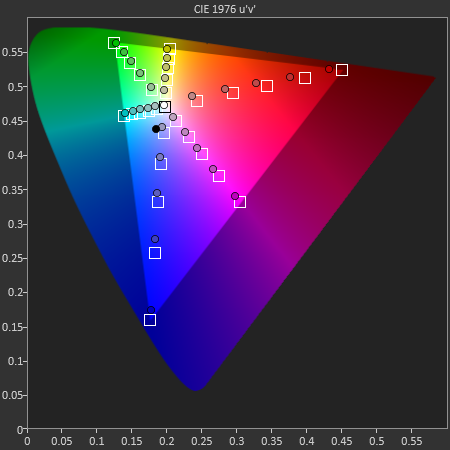
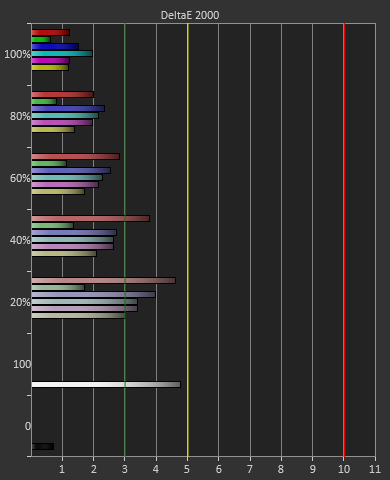
In the default sRGB mode, the U3014 is still very good, and as we get more displays in for testing I think the quality of those numbers will just improve as we see what other displays manage on our new benchmark. Keep in mind that these are all out-of-box numbers so far, where many displays end up close to double digits for DeltaE.


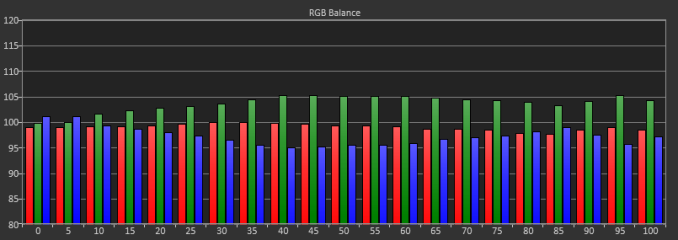
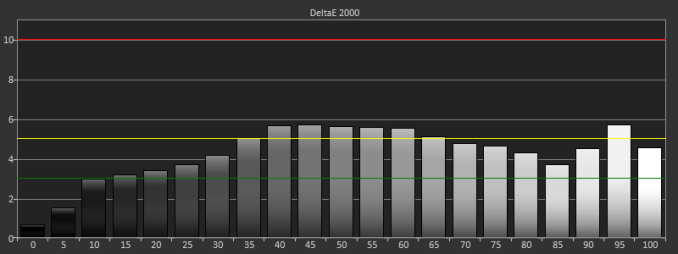










84 Comments
View All Comments
Filiprino - Wednesday, April 17, 2013 - link
Your source of lag must be the use of HDMI.cheinonen - Thursday, April 18, 2013 - link
HDMI and DisplayPort were virtually identical in this regard.red5un - Wednesday, April 17, 2013 - link
How does the new dell stack up against the NEC PA30 color wise? Love your new testing methodology but I wish there was a way to see a direct comparison. Is there a possibility of you guys retesting some of the higher end monitors? Are LED monitors finally ready to do color critical work? We do print and commercial VFX work and the NEC's are great but recalibrating every week plus knowing the CFL's are slowly dying I'm wondering if LED will be the answer.cheinonen - Thursday, April 18, 2013 - link
I have no idea how the NEC 30" would fare, as I only tested the 27", and that was with the older test format. Getting in an older monitor is less likely to happen, if only because manufacturers often don't have review samples of displays that are older laying around anymore. I'll see what possibility exists, though it would more likely just be a quick review with only the test data, and not the in-depth commentary, since that has been covered before.soerenL - Thursday, April 18, 2013 - link
Thanks for enlightening article!New to wide gamut and display profiling, have been reading a bit about it around the net, but would like know if my workflow makes any sense. Asked this in Dell forums also, apologies in advance if this is the wrong place to ask!
My primary objective is to have accurate colors in Maya and Photoshop. Secondary objective is to have accurate colors in games.
I should use sRGB emulation in Maya, and other non color managed applications, and adobeRGB in photoshop and firefox ?
I should profile the display with the provided Dell UltraSharp Color Calibration software, and store a sRGB calibration profile for example in CAL1, and a adobeRGB calibration profile in CAL2. And have the Dell Display Manager switch to CAL2 when using photoshop, and to CAL1 for all applications that aren't color managed ?
i1Profiler (the software that came with the i1Display Pro) can monitor ambient light, and automaticly reprofile based on changes in ambient light. The Dell UltraSharp Color Calibration software doesn't mention measuring ambient light at all, so I don't think the software have that capability ? Is there a way of using the hardware calibration in U3014 and ambient light measurements at the same time ? Would it be ok to install both i1Profiler and the Dell UltraSharp Color Calibration software, at the same time, do first the hardware calibration with the dell software, and then have the i1Profiler build a (software?) profile, that would mostly just reflect changes in ambient light ?
For accurate colors in games (if at all possible) I should use the games preset (to reduce lag) and then use i1Profiler to create a profile ?
sherlockwing - Friday, April 19, 2013 - link
For $1400 Dell should at least consider going up to 2880X1800 for a 16:10 monitor.Zibri - Friday, April 19, 2013 - link
I still think 2010 HP ZR30W is better than this.Oxford Guy - Sunday, April 21, 2013 - link
The u2412m has higher contrast because it's e-IPS. e-IPS has a simpler pixel structure that allows more light to be transmitted. However, e-IPS monitors always come with just 6-bit color and the thin paper used in the u2412m leads to mediocre uniformity.Also, there isn't a single A-MVA panel in your chart which makes your black level/contrast ratio comparison lack adequate perspective. You should include the best and the poorest in your charts, to provide perspective -- especially the best. The best contrast ratio would be from A-MVA.
ZoeAnderson24 - Monday, April 22, 2013 - link
Henry. true that Jean`s comment is terrific... on saturday I got themselves a Mazda after earning $4127 this last four weeks and-a little over, ten-k lass month. without a doubt its the most-financialy rewarding I've had. I started this 6 months ago and right away began to bring home more than $75... p/h. I use this here great link,, All29.comCHECK IT OUTBig Anonymouse - Tuesday, April 23, 2013 - link
Great article!Btw, how come the lag numbers are diametrically opposite to the ones in http://www.tftcentral.co.uk/reviews/dell_u3014.htm review, where it scored with the lowest lag compared to all tested monitors (some of them tested in this article too)? Could you have perhaps resetted the "Game Mode" setting by accident, or something similar?